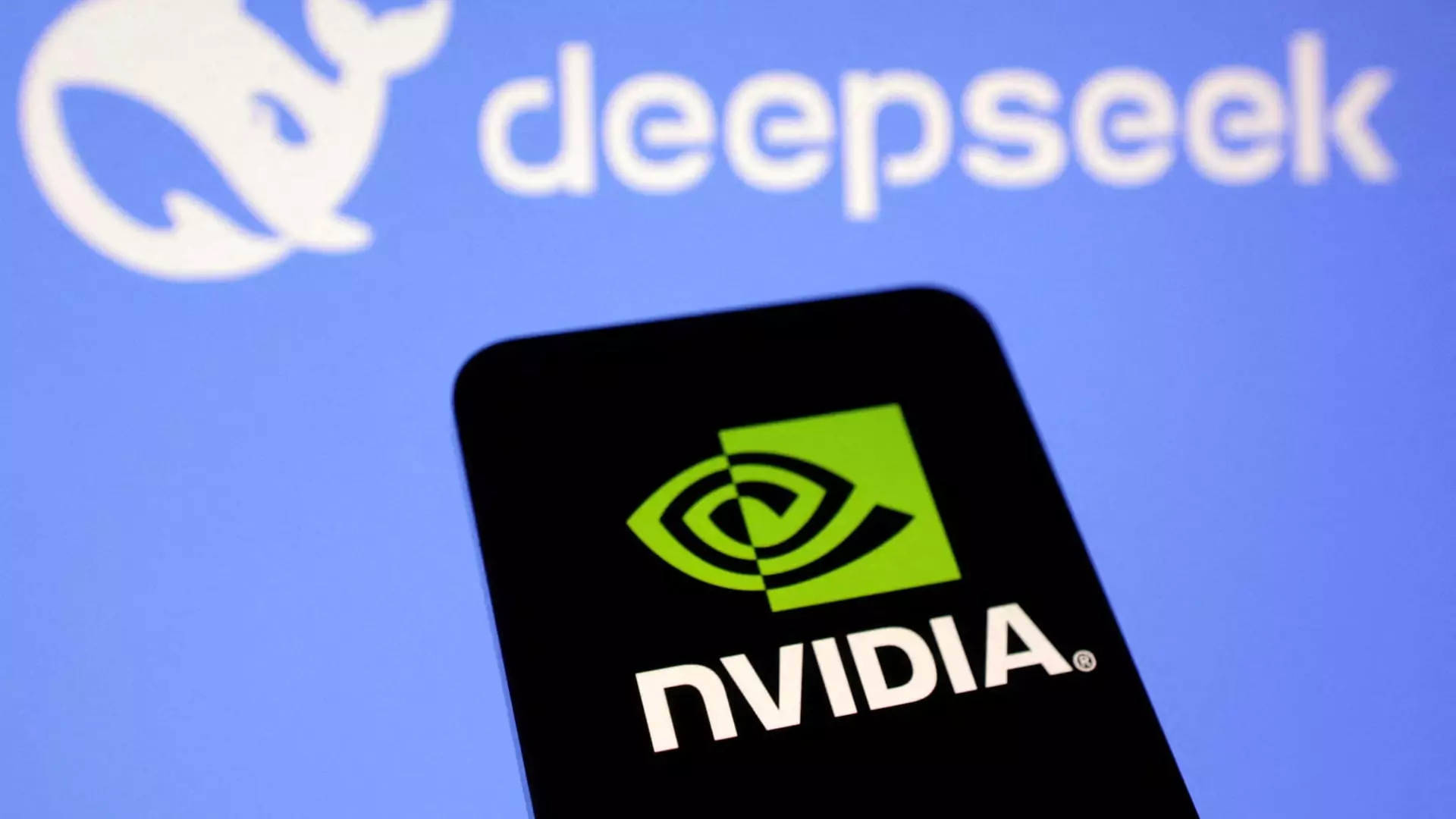The artificial intelligence (AI) landscape is experiencing seismic shifts as new entrants challenge established giants. A notable case is the rapid emergence of DeepSeek, a China-based startup that is making waves in the U.S.-led AI ecosystem. This article delves into the implications of DeepSeek’s innovative approach, how it has rattled Nvidia’s market standing, and what it means for smaller AI firms looking to capitalize on this evolving paradigm.
DeepSeek’s latest AI model has sent ripples through the market, drastically impacting Nvidia, a leading manufacturer in the graphic processing unit (GPU) arena. With its innovative architecture and business model, DeepSeek has not only eroded Nvidia’s market capitalization but raised questions about the future dominance of established companies in a market that increasingly favors versatility and cost-efficiency.
Industry analysts have noted that DeepSeek’s open-source model presents a formidable competition against Nvidia’s proprietary offerings. Andrew Feldman, CEO of Cerebras Systems, has articulated a significant shift in developer preferences toward open-source platforms, highlighting that many developers are eager to transition away from closed models like OpenAI’s due to cost constraints. This enthusiasm for open-source alternatives like DeepSeek R1 indicates a transformative moment in AI development, where affordability and accessibility could reshape market dynamics.
DeepSeek’s decision to adopt an open-source model aligns it with a growing trend among AI developers seeking flexibility in their tools. Unlike proprietary platforms that stringently restrict usage, DeepSeek allows users to modify and redistribute their models, which encourages innovation while reducing costs. This accessibility positions it as a viable alternative to established models that often require hefty financial investments for access.
According to industry experts, the growing appetite for open-source solutions underscores a broader movement among developers to leverage smaller, cost-effective models. These models not only promise capabilities comparable to their larger counterparts but also democratize access to cutting-edge AI technology. The implications are profound – smaller players in the AI chip sector are now seeing a burgeoning demand for their services, particularly in the inference segment, which focuses on deploying AI in practical applications.
The distinction between AI training and inference is crucial when discussing the evolution of AI technologies. Training often involves massive computations requiring high-performance GPUs, exemplified by Nvidia’s offerings. However, as Phelix Lee of Morningstar posits, inference can be conducted using less powerful chips that perform specific tasks efficiently. This difference heralds a shift in resource allocation from training clusters to inference clusters as companies adapt to demand shifts prompted by DeepSeek’s emergence.
Interest in inference capabilities is growing among numerous AI chip startups, who are racing to meet the new market demand enabled by affordable and accessible models like DeepSeek R1. Sid Sheth, CEO of d-Matrix, points out that the company has seen a notable uptick in inquiries from businesses eager to expedite their AI capabilities. Their aspirations demonstrate the potential for small, nimble players to make significant impacts in a landscape that was previously dominated by larger firms.
The introduction of DeepSeek’s open-source models has created a ripple effect that could lead to enhanced growth across the AI chip industry. Analysts from Bain & Company have suggested that through innovative engineering, DeepSeek has succeeded in reducing the costs associated with both training and inference. This cost reduction could catalyze broader AI adoption, in line with Jevon’s Paradox, which emphasizes that more affordable technologies tend to spur increased overall demand.
Furthermore, the competitive landscape is shifting. Industry insiders are cautioning that as demand for AI applications expands, companies with complementary technologies can find fresh avenues for growth. Sunny Madra, COO at Groq, articulates a critical insight: as demand surges and Nvidia faces supply constraints, startups that specialize in inference chips will find abundant opportunities to penetrate the market aggressively.
As we venture deeper into the era of AI, the evolution embodied by DeepSeek may well redefine the industry. The interplay between cost-effective open-source solutions and established players’ proprietary advantages will dictate the future landscape. For smaller AI companies, this is an unprecedented opportunity to innovate and capture market share in segments previously dominated by the established giants.
The entry of disruptive players like DeepSeek not only challenges the status quo of the AI chip framework but also heralds a broader shift toward democratization in technology. The implications for companies, developers, and consumers in this space will be vast as the AI ecosystem continues to evolve. The transformation fueled by open-source alternatives is just beginning, and the outcomes will likely shape the direction of AI development for years to come.

